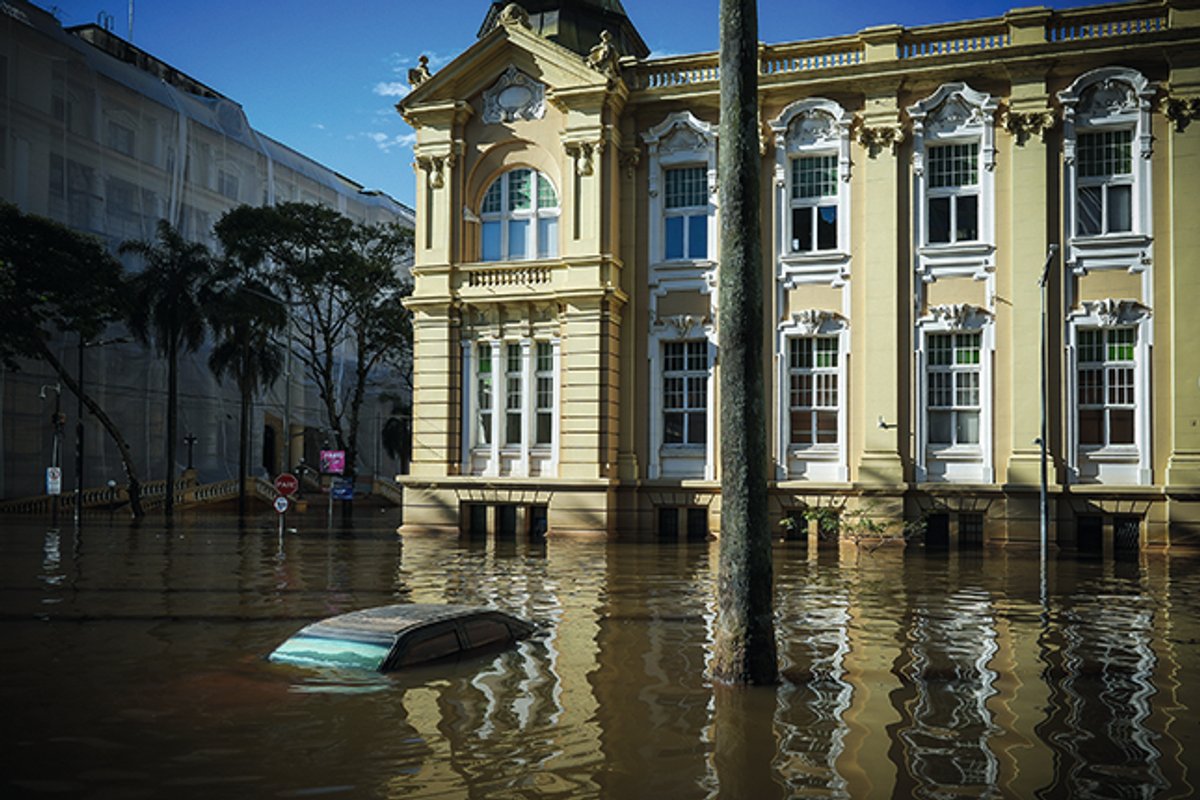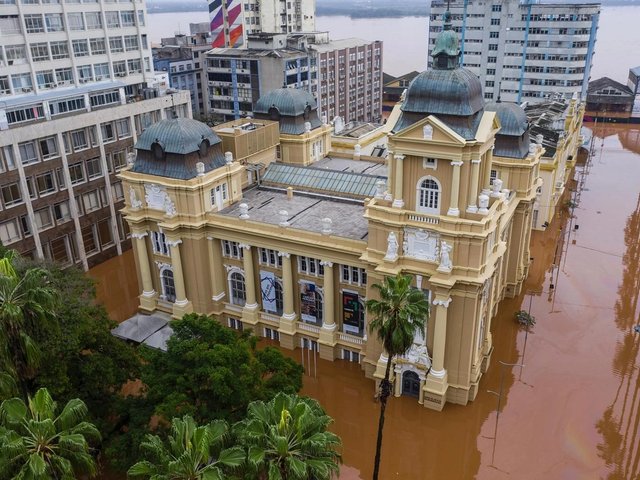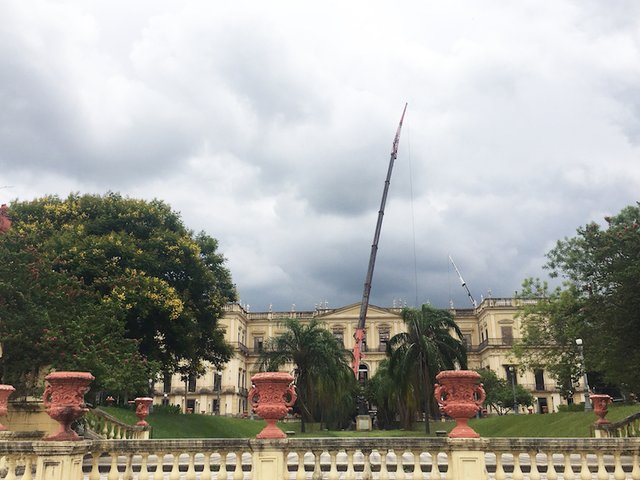A series of torrential rainstorms and floods struck the southern Brazilian state of Rio Grande do Sul in April and May 2024, killing almost 200 people and causing an estimated $15.4bn in damage. The floods, considered some of the worst in the country in almost a century, also severely harmed museums and heritage sites, and disrupted several cultural events throughout the region. As the arts sector grappled with the aftermath of the tragedy, many institutions saw a drastic decline in visitor numbers, but they remain optimistic that audiences will return this year.
The Mercosul Biennial in the state capital of Porto Alegre is one of the largest biennials in South America. It postponed its 14th edition as a result of the flooding. Originally slated to open in September 2024, the biennial will now run from March to June 2025. The biennial’s president, Carmen Ferrão, tells The Art Newspaper that relaunching the event “is part of the reconstruction” of Rio Grande do Sul’s arts sector: “It will bring more people here to energise the capital through art and education.” The biennial welcomed 800,000 visitors to its 13th edition in 2022, and it is expected to bring in more than a million this year across its 18 venues and 50 citywide public programmes. “Despite all the difficulties, the exhibition will reach more locations, including peripheral areas,” Ferrão says. She hopes that it will bring an economic boost to a region that is still struggling to rebuild its infrastructure and economy.
Rapid and unimaginable
The Museu Histórico Visconde de São Leopoldo, which explores German immigration to the state and usually receives around 200 visitors per month, closed after water submerged more than 1.5m of its ground floor. The flood destroyed historic photographs, books, paintings and a 120-year-old Schiedmayer piano, which conservators believe has suffered irreparable damage. “It was a rapid and even unimaginable event,” a museum representative said in a statement. “There was not enough time to attempt moving objects from the collection to the second floor of the museum.” Although the museum reopened in July 2024, visitor numbers have decreased dramatically. “We had scheduled school visits that did not take place, and many schools were also affected, making visits impossible,” says a spokesperson. The museum has since launched a project to cover transportation costs for students.
Porto Alegre’s Casa de Cultura Mario Quintana is an arts centre consisting of several museums, including the Museu de Arte Contemporânea do Rio Grande do Sul. It reopened in August after a four-month closure and restoration of external infrastructure that had been submerged during the floods. The museum formerly received around 30,000 visitors per month—a number that has declined while the surrounding area struggles to recover.
Another institution in Porto Alegre, Fundação Iberê Camargo, reports receiving about 32,500 visitors last year—a significant drop from around 59,000 in 2022. (Numbers for 2023 were unavailable.) Although the museum was left unscathed by the floods—largely thanks to its elevated location and a retaining wall that guards it—its president, Emilio Kalil, says that the Fundação Iberê Camargo will work to move its permanent collection to a separate site as a preventative measure. The museum’s founder, the Brazilian painter Iberê Camargo, “defended the need for an ‘ecological conscience’ in his creative process”, a museum representative said in a statement, “leaving records through his works, writings and public statements”. The museum, which was the first in the area to reopen last year (in June), launched several relief programmes, including the sale of works by past artists-in-residence to help families in the region rebuild after the floods.




